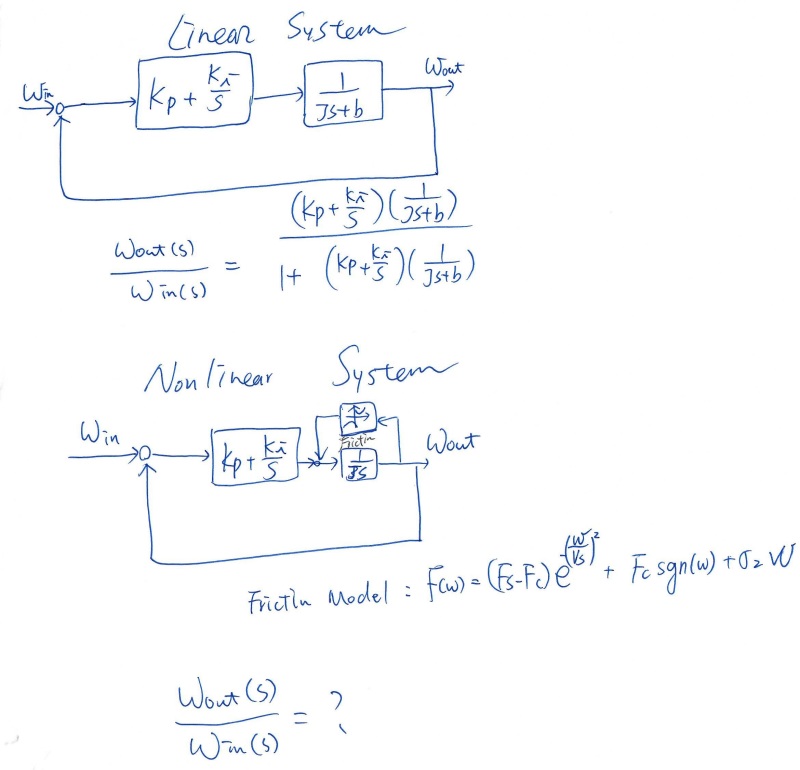Hello engineers:
I have an question of derive transfer function in nonlinear control system, as title.
Generally, a linear system can easy derive transfer function like the picture, but it is difficult to derive transfer function when it include friction model.
I want to ask every excellent engineers can derive the transfer function?

Friction model is a velocity function : F(w) = (Fs-Fc)exp(-(w/ws)^2)+Fc*sgn(w)+q2*w
Fs, Fc, ws and q2 is known
Thank you!!
I have an question of derive transfer function in nonlinear control system, as title.
Generally, a linear system can easy derive transfer function like the picture, but it is difficult to derive transfer function when it include friction model.
I want to ask every excellent engineers can derive the transfer function?

Friction model is a velocity function : F(w) = (Fs-Fc)exp(-(w/ws)^2)+Fc*sgn(w)+q2*w
Fs, Fc, ws and q2 is known
Thank you!!
